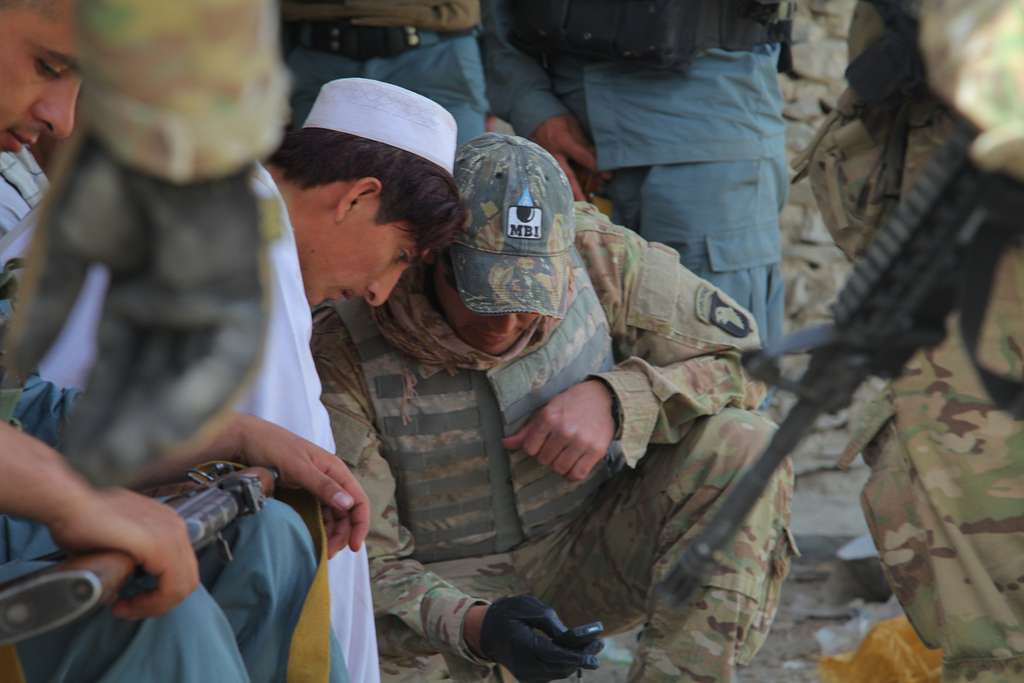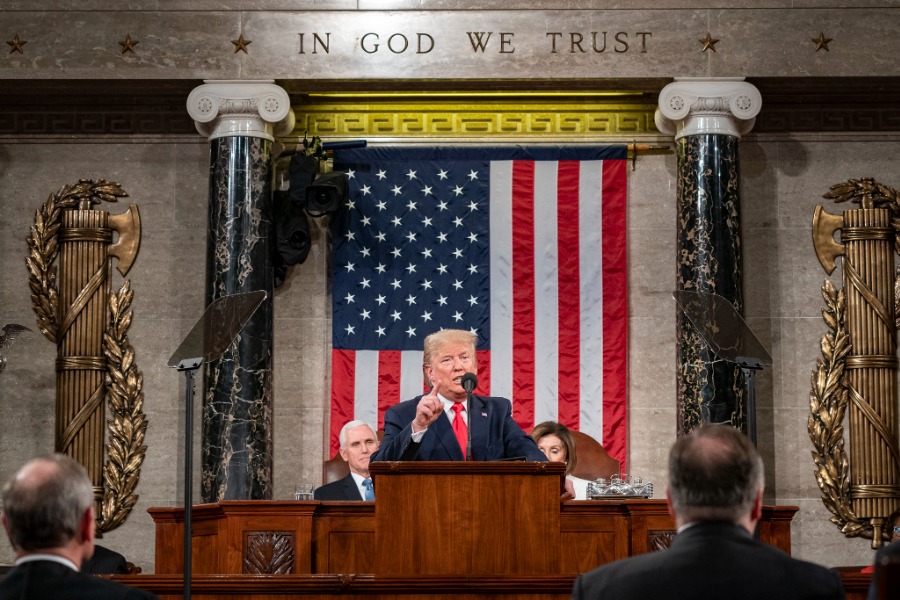Raha Wala Responds on AUMF Debate
Raha Wala of Human Rights First writes in with some reactions to my posts last week on the AUMF hearings, to which I respond briefly at the end.
Jack’s posts on the Senate Foreign Relations Committee (SFRC) Hearing on the AUMF raise important issues regarding the administration’s claimed Article II authorities to use force (see here and here). However, the posts could also create confusion regarding whether it would be wise to repeal, narrow, or expand the 2
Published by The Lawfare Institute
in Cooperation With

Raha Wala of Human Rights First writes in with some reactions to my posts last week on the AUMF hearings, to which I respond briefly at the end.
Jack’s posts on the Senate Foreign Relations Committee (SFRC) Hearing on the AUMF raise important issues regarding the administration’s claimed Article II authorities to use force (see here and here). However, the posts could also create confusion regarding whether it would be wise to repeal, narrow, or expand the 2001 AUMF. The thrust of Jack’s argument is that the Obama administration is “[i]n fact as well as appearance, saying that Article II gives you all that the AUMF does and more,” and that relying on Article II authority will provide for more expansive and less transparent uses of force as compared to a new AUMF. These are serious claims worth examining. First, while it is true that the administration witnesses were not clear about their view of the scope of Article II authority, the argument that the administration believes that Article II authority provides as expansive—if not more expansive—lethal targeting authority than armed conflict-based, AUMF authority is unfounded. This administration has maintained the view that under AUMF-based authority in its claimed armed conflict with al Qaeda and associated forces, all “members” of al Qaeda are legally targetable, irrespective of whether there is intelligence linking them to any particular threat (the administration’s policy guidelines do impose further threat-based constraints, but that’s a different issue, and would in any event constrain Article II uses of force in practice as well). Given that the administration appears to believe that al Qaeda does not have a non-military wing to which members could belong without being legally targetable, and considering the breadth of the claims made by the government in Habeas proceedings on who constitutes a “member” of al Qaeda, the AUMF-based, armed conflict legal basis for the use of force would appear to be exceedingly broad. Is an Article II basis for targeting as broad? It’s hard to see how it could be. As DOD General Counsel Preston stated in the SFRC hearing, the “President has authority, under the U.S. Constitution, to use military force as needed to defend the nation against armed attacks and imminent threats of armed attack.” Even with a so-called “elongated” definition of imminence, it’s hard to see how this authority would allow the type of broad, standing, status-based targeting currently permitted under an AUMF/armed conflict legal theory. Further, as John Brennan, then-chief counterterrorism advisor to the president and now CIA director, stated: “Because we are engaged in an armed conflict with al-Qa’ida, the United States takes the legal position that —in accordance with international law—we have the authority to take action against al-Qa’ida and its associated forces without doing a separate self-defense analysis each time.” Although Brennan appears to have been addressing the United States’ obligations under international law—not its Article II constitutional basis for using force in self-defense—the clear implication of this statement is that absent an AUMF authorized armed conflict, the administration would have to do a separate self-defense analysis before each use of force, as opposed to having standing authority to use force. In other words, repealing the AUMF and ending the armed conflict would mean more—not less—constraints on the administration’s ability to use force. Second, even assuming Jack’s right that the administration may claim Article II use of force authority that is as, or more, expansive than AUMF-based authority, it does not follow that repealing or narrowing the AUMF would be at the price of, as Jack states, “placing targeting power on a more expansive, unilateral Article II basis.” Such a claim assumes that Article II authority only exists absent an AUMF, or would necessarily expand if the AUMF were narrowed or repealed. Of course, neither this administration nor any one before it has ever disclaimed Article II use of force authority, meaning that whatever authority an AUMF supplies is in addition to, not in substitution of, Article II authorities. Further, as Bobby Chesney points out in his article Postwar, this administration’s understanding of its Article II authority is built from the precedents established by many past administrations, and is unlikely to change solely because AUMF authority expires or is repealed. Third, Jack claims that a framework statute such as the new AUMF he and his co-authors proposed will lead to increased transparency, oversight, and accountability regarding the use of force. However, there is no necessary connection between these laudable goals and a new force authorization. As we have seen with the 2001 AUMF, force authorization measures, if not carefully drafted, can in fact undermine transparency, oversight, and accountability because the executive branch can claim that its actions have the imprimatur of the legislative branch, without having to provide additional justification for using force. To the extent that Jack and others are interested in transparency, oversight, and accountability, such measures can be pursued separately, and applied to the current AUMF or even Article II uses of force, without conferring onto the Executive Branch additional warmaking authorities. An excellent example of this is Rep. Mac Thornberry’s “Oversight of Sensitive Military Operations Act,” which was codified in the FY 2014 NDAA. Proposals such as Thornberry’s would assert Congress’s prerogative to regulate the use of force, without keeping the nation on a perpetual war footing. Though it is not necessary for Congress to authorize the use of military force to deal with terrorist threats, it is understandable from a separation of powers perspective that many in Congress would want to play a more active role in doing so. If Congress chose to go this route, it should only authorize the use of military force consistent with the requirements of international law. That means—absent a state of armed conflict—force can only be authorized against individuals that pose an imminent threat to Americans that can’t be dealt with through non-lethal means. It would be inconsistent with international law for Congress to declare war, or otherwise authorize the use of wartime powers, against groups that are not engaged in an armed conflict with the United States; that is, groups that are not sufficiently organized so as to constitute a party to the conflict under the laws of war (International Humanitarian Law), and are not engaged hostilities of sufficient intensity so as to rise to the level of armed conflict. A recently proposed new AUMF directed at the Benghazi perpetrators is problematic for these reasons, and also because uses of forces pursuant to it would probably not be in compliance with jus ad bellum requirements under international law, as Ashley Deeks has pointed out. Though it is impossible to know for sure, I strongly suspect that if Jack’s AUMF proposal were the law today, the Benghazi perpetrators would already be on the AUMF list despite these concerns. Congress has an appropriate role to play in authorizing and regulating the use of force. However, if it is not careful, Congress may end up conferring onto the Executive Branch expansive authorities that it never intended to, or that otherwise violate U.S. obligations under international law.Some quick reactions: When I said that “[i]n fact as well as appearance, saying that Article II gives you all that the AUMF does and more,” I was discussing the impact on future presidents and future terrorist threats, which have been the focus of the AUMF renewal debate. Wala may be right that Article II does not give as much status-based targeting authority to core al Qaeda members as the AUMF, but that was not my focus, nor is it the main reason for which Article II will be invoked going forward. The main focus going forward is on al Qaeda affiliates and copycat groups and other threatening extra-AUMF terrorist groups. For those groups, Article II allows targeting on a broader basis than the AUMF because, among other reasons, there is no need for the target to have even the slimmest indirect nexus to al Qaeda. Wala is right that the President retains Article II-based targeting powers whether the AUMF remains or is repealed, a point I and others have made many times. But the administration has insisted, until recently at least, that it relies on statutory as opposed to constitutional authorities in the fight against Islamist terrorists. An official move to reject the AUMF and rely on Article II for counterterrorism operations is a move in the direction of expanding the scope of targetable threats beyond the AUMF and minimizing Congress’s role. It is also a move in the direction of broadening the President’s war powers generally. As the Article II justifications for the intervention in Libya and the planned one in Syria show, the President has enormous discretion in defining his own Article II powers, and has defined those powers increasingly and relentlessly broadly throughout U.S. history. That trend will not stop when Article II becomes the sole basis for counterterrorism operations, especially for presidential administrations that are not as shy or circumspect about Article II as the Obama administration sometimes has been. I agree that the reforms we proposed in our Hoover paper on transparency and oversight can be pursued independent of a new AUMF – and have said so before. I also agree, as we said in our Hoover paper and elsewhere, that any authorization of force should be consistent with international law, though Wala and the United States might have different conceptions of what that means.
Jack Goldsmith is the Learned Hand Professor at Harvard Law School, co-founder of Lawfare, and a Non-Resident Senior Fellow at the American Enterprise Institute. Before coming to Harvard, Professor Goldsmith served as Assistant Attorney General, Office of Legal Counsel from 2003-2004, and Special Counsel to the Department of Defense from 2002-2003.





